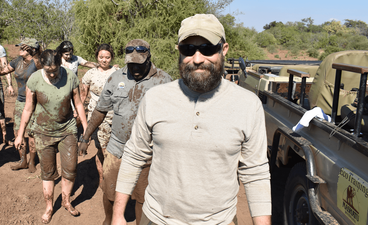Assistant Professor of Urban and Community Forestry
Dr. Eric North joined the Department of Forest Resources in December 2020 as Assistant Professor of Urban and Community Forestry. Like many people, he took a round-about path before finding his way to to forestry. He had established a career in computer science until a trip to Kenya shifted his perspective when a guide showed him the impact tourism had on local forests and how the community worked to rejuvenate them in the off season. He told the Minnesota Daily, “That was my first introduction to the idea that you can do natural resources and forestry things in a city. I came back from Kenya and thought, man, maybe that’s something I can do."
Dr. North returned to study Urban and Community Forestry at the University of Minnesota, quickly earning his B.S., M.S., and Ph.D. He moved on to the University of Nebraska-Lincoln where he created the 4-year degree program in Community and Regional Forestry, for which he has been awarded the Nebraska Statewide Arboretum’s Educator Award. Now he’s back with our department to lead the Urban and Community Forestry track, continuing the work of the recently retired Gary Johnson. Dr. North organizes the iconic Minnesota Shade Tree Short Course conference and conducts research in the Urban Forestry Outreach and Research Lab (UFOR).
Dr. North’s approach considers how people relate to the trees in their communities, even when those trees aren’t even real. In an article for SYFY WIRE, he calculated the growth rate for the anthropomorphic tree-like Marvel character, Groot.
“I calculated a growth rate chart that sort of looks like Groot, given the few data points that we have for Groot’s height and age, so I calculated a polynomial function that would fit with the data we have. You might think of Groot almost like a redwood, where he grows pretty quick in the beginning and then stays this big giant size for a long period of time.”
All people have different lived experiences and interactions with trees. Some people grow up surrounded by forests while others primarily see them planted in boulevards or in public parks. A significant focus of Dr. North’s teaching and outreach is examining the equitable distribution of trees within communities and analyzing who benefits from those trees and who’s being left out. As he told the Minnesota Daily, “Can we look at how the trees are distributed in your community? Are there more trees, or are there more well-maintained trees, in wealthier neighborhoods? This semester, the students look very specifically at Indigenous lands and how those lands were managed and what that might mean to incorporate that information into city planning.”
We’re happy to have him back with us this year and beyond. You can follow him on Twitter and Instagram @treesotan and connect with the UFOR lab on Instagram @uforlab.


